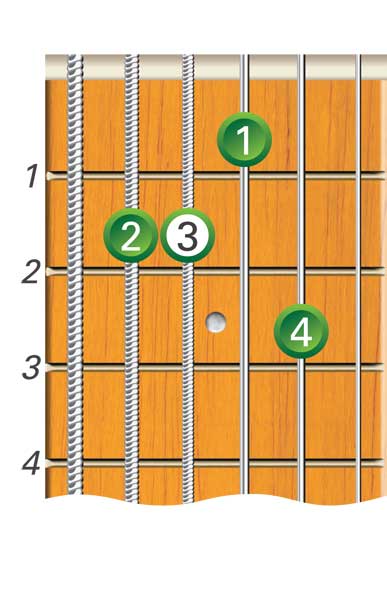
Dominant 7th Chords
One of the most common sounds in Blues, Jazz and Rock is the Dominant 7th chord, (commonly called a 7th chord). When playing a 12 Bar Blues, it is common to play chords I, IVand Vas 7th chords. A 7th chord is obtained by adding the flattened 7th degree (note) of the scale to a major chord. Thus the notes of a dominant 7th chord are the first (1), third (3), fifth (5) and flattened seventh ( b7) notes of the major scale. This chord formula can be expressed as:


Notes in Chord

The C7 chord is a good example. It is created by adding a flattened 7th degree to the C major chord.

Once you know the formula for any chord, you can construct it in any key by taking the root note and adding the other notes from the corresponding major scale. For example, a G7 chord can be constructed from the 1st, 3rd, 5th and flattened 7th degrees of a G major scale, an E7 chord contains the 1st, 3rd, 5th and flattened 7th degrees of an E major scale, etc. The flattened 7th degree of a 7th chord is not in the major scale, it is an alteration to get the required sound. You have already learned several 7th chord shapes.
Learn the new ones shown here and then use them to play the following example.
E7

B7

Play the staccato strums on beats 2 and 4 of each bar by muting the strings with the heel of the right hand immediately after the chord has been played.